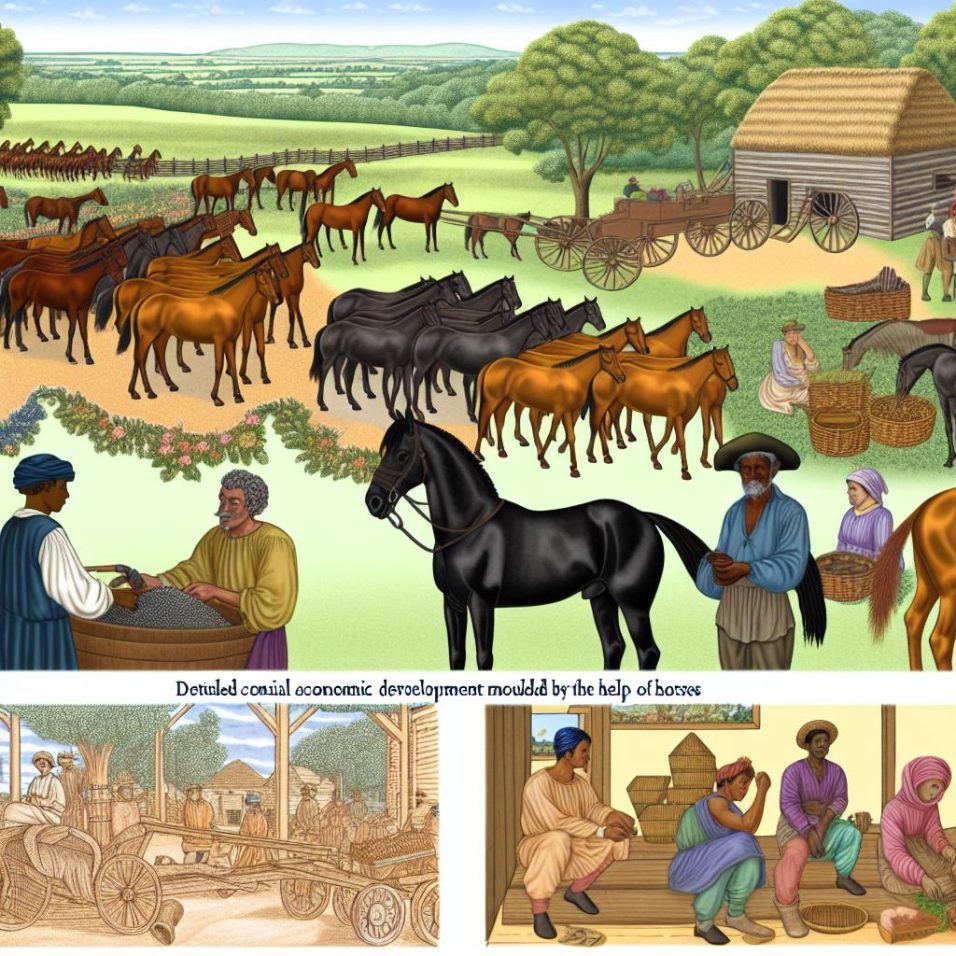The Role of Horses in Virginia’s Colonial Economy
In the early days of colonial Virginia, horses played an integral role in the development and stabilization of the economy. From transportation to agriculture, these animals were essential in various aspects of colonial life.
Transportation and Trade
Horses significantly enhanced transportation capabilities within the colony. Prior to the widespread availability of horses, travel across the rugged and often undeveloped terrain of Virginia was both challenging and time-consuming. Horses facilitated faster and more efficient travel, enabling colonists to connect settlements more effectively. By reducing the time it took to travel between locations, horses allowed for quicker communication and the exchange of information, which was crucial for both economic and administrative purposes.
The use of horses also bolstered trade activities. Merchants and farmers depended on horses to transport goods to and from markets. This not only increased the volume of trade but also expanded the variety of products exchanged both locally and with neighboring colonies. The ability to transport goods over longer distances allowed for the introduction of new products and materials into the colony’s economy, enhancing its diversity and resilience. For instance, horses enabled the timely delivery of goods such as textiles, spices, and other commodities that were not produced locally.
Agricultural Contributions
In agriculture, horses were invaluable. They were used for plowing fields and transporting heavy loads, which substantially increased agricultural productivity. The ability of horses to pull plows and carts meant that farmers could cultivate larger areas of land than previously possible, leading to increased crop yields. This directly contributed to the colony’s food security and economic independence, as more surplus was available for trade.
Horses also aided in the transportation of tobacco, Virginia’s cash crop, to ports for export. The economic success of the tobacco industry was in part due to the efficiency horses brought to plantation operations. Not only did horses facilitate the cultivation of tobacco by enabling the efficient tilling of the land, but they also played a crucial role in the logistics of moving harvested crops to shipping points, thereby helping maintain the colony’s prominent position in the global tobacco trade.
Military and Security Uses
Horses were also crucial in the defense and security of the Virginia colony. They provided mobility to colonial militias, who used them for patrolling and rapid response to threats. This mobility ensured better protection for settlers against external threats such as hostile groups or foreign incursions, thus contributing to the colony’s stability. The ability of mounted units to move quickly across the terrain offered strategic advantages, allowing colonial forces to gather intelligence, conduct reconnaissance, and deploy troops efficiently during conflicts.
Breeding and Trade of Horses
The breeding and export of horses became a profitable venture for Virginia colonists. As demand for horses increased, breeding programs emerged. These programs focused on developing breeds that were well adapted to the local environment and the specific needs of the colony. This not only provided an additional income stream but also facilitated the spread of specific breeds that were better suited to the colony’s needs. The breeding of horses catered to both domestic demands and external markets, where Virginia horses became valued for their strength and adaptability. This trade in horses helped establish networks of commerce that further integrated Virginia into the broader colonial economy.
Cultural Impact
Beyond practical uses, horses held cultural significance in colonial Virginia. They were symbols of status and affluence, with wealthy colonists often displaying their finest horses as a measure of their prestige. Owning horses became a marker of wealth and social standing, and the animals were often gifted or exchanged in social and political transactions. Riding, hunting, and horse racing became popular activities, reflecting cultural values and contributing to social life in the colony. These activities were occasions for socializing and networking, providing opportunities for the elite to assert their status and influence in the community.
Conclusion
In summary, horses were a cornerstone of Virginia’s colonial economy. Through their contributions to transportation, agriculture, military endeavors, and trade, they not only supported economic growth but also influenced the social and cultural fabric of the colony. Horses facilitated the physical and economic expansion of the colony, allowing it to become a more connected and prosperous society. For further details about the historical impact of horses in colonial times, you may explore more specialized resources on colonial history.


